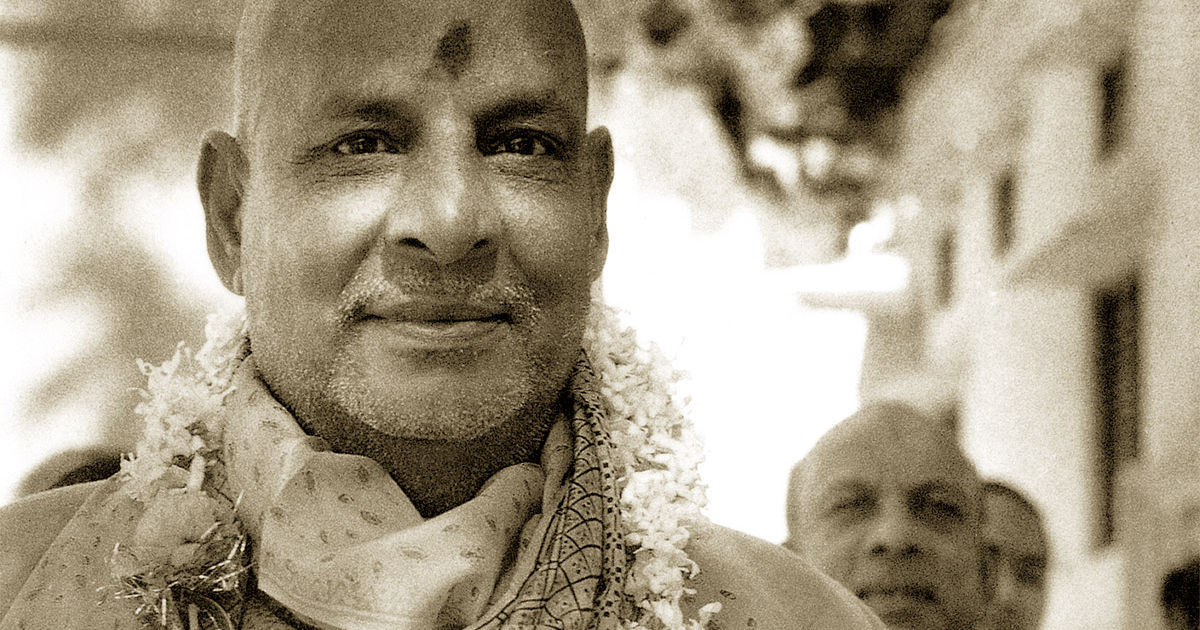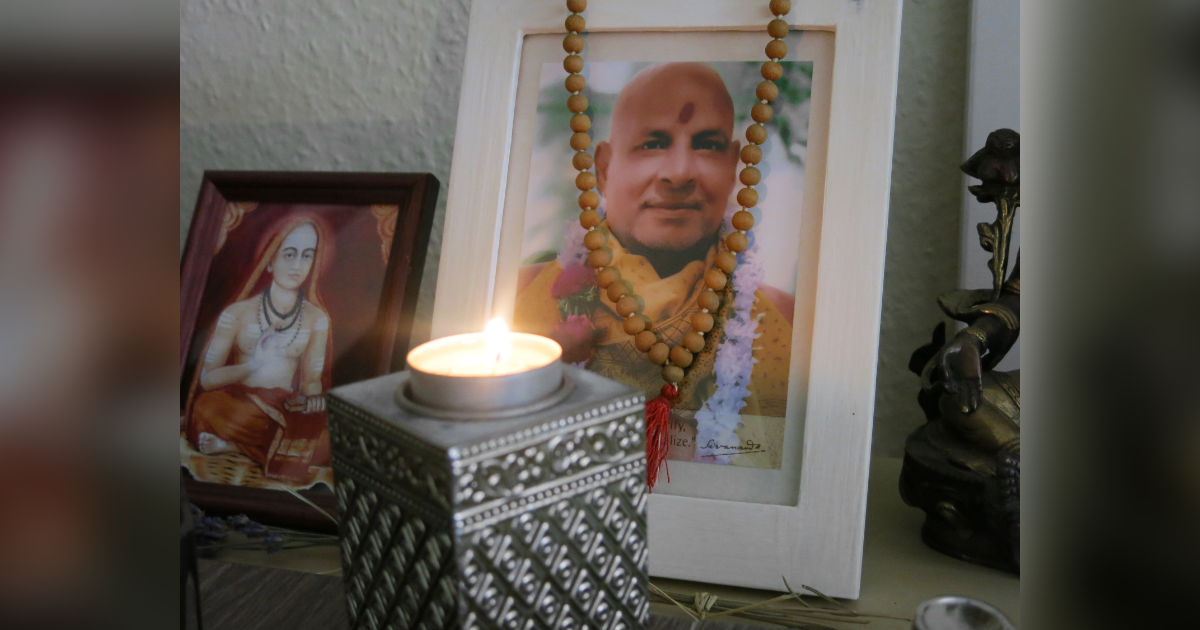The Hindu belief is totally non-exclusive and accepts all other faiths and religious paths. An ancient Vedic text says that God or truth is one and wise persons refer to it by many names. Hindus believe that no one religion is exclusively true, that all major faiths are aspects of the one universal all encompassing truth, and that there are many paths to seek and experience religious understanding and enlightenment. Continue reading
Tag Archives: Hinduism
608 – The Hindu Code of Conduct
Hinduism is the world’s oldest religion. It is also known as Sanatana Dharma. It is a natural religion and its practices and philosophies are considered accessible to all.
All beings from the smallest organism to man, are considered manifestations of the divine. Hinduism views the universe as a family, or in Sanskrit, Vasudhaiva Kutumbakam. Continue reading
594 – Hinduism explained
by Dr Radhakrishnan and Swami Sivananda
Dr Radhakrishnan is considered one of the most learned of Hindu Scholars. He was a philosopher, author, statesman and educationalist. His birthday on 5th September is celebrated as Teachers’ Day in India. He was a former President of India and a professor of Eastern Religions at Oxford university. He was also named “Knight of the Golden Army of Angels,” the Vatican’s highest honor for a Head of State. Continue reading
591 – The sacred 3 virtues
What are the three things that most people do not know? And they wish to know them? Tevijja and Trayi Vidya describe these three virtues. Tevijja comes from Buddhism and Trayi Vidya is from Hinduism.
Tevijja describes these qualities: Continue reading
590 – Who is a Hindu?
Hinduism is the world’s oldest faith in the world. Hindus believe in the doctrines of samsara (the continues cycle of life, death and reincarnation) and karma (the universal law of cause and effect). In Hinduism, the soul or Atman is the crux of it. Continue reading
435 – Umbrellas
When we think of umbrellas, we think of a protecting force or influence. Umbrellas are never thought of as negative objects. It prevents us from being exposed to rain, snow, and sunshine. The umbrella also signifies the canopy of the heavens, and our shelter. It is a symbol of the sun, and a symbol of the shade. It also represents power and dignity. Umbrella also means something that brings unity, and one agency can be an umbrella for many smaller and related agencies to flourish. Continue reading
420 – Visualization
Modifications in our consciousness.
“Each day watch the colors of your mind.
Until the light shines clearly
And you see straight through
The craving of your senses.
Thus, you will win freedom from experiences
Which carves you to its form
Release from desire which eats you from within.” Swami Satyananda Saraswati.
In Hinduism, colors play a very significant role. Some of the main colors are red, yellow (turmeric), green from leaves and white from wheat flour.
The meaning of the colors
Red is the color used most frequently for auspicious occasions like marriages, birth of a child, festivals, etc. A red mark is put on the forehead during ceremonies and important situations. As a sign of marriage, women put red powder (sindhoor made from turmeric and lime juice) in their hair parting. Red powder is applied to statues of deities, during prayers. It is also the color of Shakti’s strength. A red dress is put on Gods who are charitable, merciful and protective against evil. A married Indian woman is wrapped in red, when she is cremated.
Saffron expresses fire, abstinence and celibacy. Wearing this color also means searching for the light.
Green characterizes peace and happiness.
Yellow is the color of knowledge and learning and it symbolizes happiness, peace and meditation.
White is a mixture of seven colors, and therefore depicts the qualities of each color. It typifies purity and cleanliness. It is also the color of mourning for Hindus. The deities always have a little bit of white on their clothes.
Blue is a color which is everywhere in nature. It is a color which demonstrates stability and strong character. Rama and Krishna are colored blue because they protected mankind against evil.
Violet is associated with oneness with God, peace and wisdom. The lotus flower is of many colors but violet is considered the most sacred.
Last but not least, black is a color which is used to ward of the evil eye. According to Astrology if you wish to harmonize the planetary influences, then black is the color to be worn on Saturday. Black color is offered to the fiercest form of mother. In this color she absorbs everything that she has created.
The colors of the gunas
Prakriti, the Goddess is described as having three gunas. Purity, passion and inertia. Knowledge arises from Sattwa; greed from Rajas; delusion, heedlessness and ignorance arise from Tamas. The Gunas are represented by three colors, Sattwa is harmony and purity, and is therefore white. Rajas is energy and passion and is rendered as red. Tamas is inertia and ignorance and is depicted as Black.
A special visualization for you, before you get out of bed.
Close your eyes. Breathe in and out of your nostrils eleven time. Now visualize your breath, while inhaling going in through both nostrils and meeting at the eyebrow center. While exhaling visualize the breath descending form the eyebrow center out of both the nostrils. This is triangular breathing. Do this fifty-four times. See a color in the Chidakasha, the space behind the eyebrow center. Ten minutes stay with the color, if the color changes, no worry. End the practice with becoming aware of the normal breathing process.
All the colors are very powerful in their energy. Do not push to see a particular color.
Aim Hrim Klim
Yoga talk with Swami Yogaswarupananda – Rishikesh – Manipur Univesity
Swami Yogaswarupananda from Rishikesh / Manipur University talks about yoga, krishna,  bhagavad gita and much more.
bhagavad gita and much more.
Here you can find:
Our online channels:
You can donate here
💛 Om Shanti 🕉
Podcast: Play in new window | Download
Subscribe: RSS
“Upasana Yoga and Nondual Devotion” – Yoga of Love – James Swartz
Nondual love means unconditional love. Maturity is important for a love
relationship. Free will and love. Means of knowledge. In the final stage you get rid of obstacles.
Here you can find:
Our online channels:
You can donate here
💛 Om Shanti 🕉
Podcast: Play in new window | Download
Subscribe: RSS
“Karma Yoga” Yoga Of Love – James Swartz
Om! Karma yoga stage: Love of God becomes a discipline. Basic universal rules Moral dimension in this universe. Noninjury. Every human being has a different kind of nature. There is not one thing that isn’t God. What is karma yoga? You have the right to act. Who gives the result?
Karma yoga stage: Love of God becomes a discipline. Basic universal rules Moral dimension in this universe. Noninjury. Every human being has a different kind of nature. There is not one thing that isn’t God. What is karma yoga? You have the right to act. Who gives the result?
Here you can find:
Our online channels:
You can donate here
💛 Om Shanti 🕉
Podcast: Play in new window | Download
Subscribe: RSS
“The big picture” Yoga Of Love – James Swartz
 Om!
Om!
If you know that you are love every relationship is a love relationship. You want to seek love or do you want to have love seek you? If you know that you are love every relationship is a love relationship. You are totally loveable is the starting point of Vedanta. You should self knowledge to solve your love problems. God is important in your life. What is yoga of love? Love is your nature. Five stages of devotion. You can express your emotions honestly to your God.
Here you can find:
Our online channels:
You can donate here
💛 Om Shanti 🕉
Podcast: Play in new window | Download
Subscribe: RSS
Overcoming anger with the vedic method of Neti-Neti | Pot-clay discimination to realise the self
 What is superimposition?
What is superimposition?
How do you discriminate between your true self and what you belief to be your self. Learn the vedic method of ‘Neti-Neti’. Don’t identify with your body. Why did Arjuna choose Krishna instead of getting a big army in the battle? Arjuna struggels when he sees who he is supposed to fight against. He gets unhappy, doesn’t want to fight. This is our situation: We are unhappy and are searching a fundamental method to get happy in life. Perception from senses is unreal. We need to restrain our senses, to see the reality. Pot-clay comparison. What changes, doesn’t exist. The ‘I’ doesn’t change, everthing that changes – emotions, personality, job – are names and forms. They appear to be real. But names and forms aren’t real. All we know is a product of a word and an appearance. They are passing. They don’t exist. You are unaffected by everything in this dream. All ideas are in your mind, just like in the dream. The only reality in the dream is the consciousness that we call ‘I’. Here is only consciousness, not mine, not you. Consciousness can’t be heard, touched. But it is self-illuminate. You know it exists. You’ll become more tolerant and less pulled by thoughts and objects. Listen to the sprinkling talk of Chandra Cohen for beginners. With humour and convincing arguments.
MORE VEDANTA ON OUR CHANNEL: Vedanta by Chandra Cohen
You are welcome to send a donate. Support our ashram with any amount. Thanks for your charity! Donate here
Om Shanti 🕉
Value management and attaining unconditional love – James Swartz – Yoga of Love, Bhakti Sutra
In the satsang we create a sattvic atmosphere that makes it easier
to focus on the knowledge. It is important to keep the knowledge
active when the mind is rajasic or tamasic. When the values are
assimilated the mind stays sattvic and the knowledge stays active.
A change in your lifestyle may be necessary to make the mind
sattvic enough. Deliberate thinking is observing the mind, step
back and think about it before you act. If necessary pause, collect
your thoughts, you can edit your thoughts as they come up. Pay
attention that the information is appropriate, kind, timely and
credible. Impulsive thinking has the need to react immediately. 11.
Dispassion towards sense objects, for example music, food, sex. No
obsession, except obsession for Vedanta. Assimilating these values,
starting with an intellectual understanding brings you a lot of
experiential and emotional satisfaction. 12. Renunciation and
Austerity. Eagerness to get rid of things and to live simply. Do not
accumulate stuff. 13. Absence of egoism. It’s about a simple
recognition about the difference between my (real) Self and the ego
(reflected self). Sadhana: Whenever you say the ‘I’ in the day-to-day
activities ask yourself which ‘I’ is meant. This helps to
discriminate. Keep track of your speech. Keep a short leash on your
ego and let it walk in front of you. 14. Appreciation of time. Don’t
waste time and go on with self-inquiry. 15. Absence of ownership. Is
it your body or your children? Everything comes from isvara.
Sadhana: Pay attention to the word ‘mine’. 16. Absence of
excessive attachment to loved ones. Serve the people in your field
with love but don’t get excessively attached. 17. Sameness of mind
under all circumstances. Cultivate the value of a quiet mind and for
sattva. Read the book Yoga of the three energies. Importance of
the management of the gunas. You can remove most of the
physical pain with guna management. Most of the daily pains are
caused by blocked prana or tamasic energy. 18. Non-dual devotion
to God. 19. Love of solitude. You can hear the silence speaking.
Gradually work to it if you have a busy life. 20. Absence of craving
for company. People can be in your life but you should have no
need for it. 21. Constant practice of self-knowledge. 22. Value for
completing or resolving things. Too much agitation prevents you
from finishing projects and brings to starting new ones. Karma yoga
reduces your karmic load. The degree to what you reduce your
karmic load is the degree to what your mind is peaceful. Tamasic
people don’t want to complete things. Rajasic people want to
complete things but they are too busy to do the completion.
Consequence is that they are always agitated. 23. Precaution,
deliberation and restraint. Think ahead and make a plan before you
judge. Value for holding back. Rajasic people want to do things
immediately. If you can’t hold on you find yourself doing a lot of
things you don’t have to do. 65. Offering all activities to the Lord,
one should direct negative feelings – desire, anger and pride – to
Him. 66. Transcending the gunas, the devotee should act only out
of pure love of God and remain perpetually in the relationship of a
servant to his master or a lover serving her beloved. 67. Among the
Lord’s devotees, the greatest are those who are dedicated solely as
intimate servants. Sakhya bhava and further bhavas. Secret love
affair with God behind the back of your husband. What is your
dominant way to express your love? Love with understanding is
better than only emotional love, for example sakhya bhava. 68.
Conversing among one another with throats choked, hair
standing on end and tears flowing, the Lord’s intimate servants
purify their own followers and the whole world. 69-83. 84. Anyone
who has faith in these auspicious teachings will attain non-dual
devotion. Indeed he or she will attain unconditional love.
More: Vedanta Seminars.
More on: Vedanta.
Learn more about: Yoga Vidya.
You can sign up for: our online seminars.
You can also support us by: donating.
Podcast: Play in new window | Download
Subscribe: RSS
Jealousy, consistent effort and mastery of the mind – James Swartz – Yoga of Love, Bhakti Sutra
These values are qualifications for moksha. When you are
spiritually stuck it’s probably because one or more spiritual values
are only partially assimilated. When you are not up to the mark,
pick a value and work on it for 1-2 months. It’s a constant practice.
When you find a consistent pattern of frustration, anger or
depression there is some value that needs work. Apply the opposite
value. If you are a selfish person then learn how to be generous.
Value management is extremely important. 8. Jealousy and Envy:
Rajas is the problem. Don’t compare yourself to others. If you don’t
know who you are the bad values are obstacles and the good
values are helpful. Pay attention with comparisons that make you
feel inferior. Nobody is trying to make you feel inferior. You have to
make yourself feel inferior or superior. Comparison leads to
competition and competition leads to violence, anger and
sometimes destruction. Jealousy and Envy are transformed anger
and they usually lead to depression. You are never jealous of a
whole person only of an aspect. In other words, jealousy is a
projection that masks an insufficient appreciation of my own nature
and the abundance of good qualities that spring from it. A self-realized
person is never jealous, because she is mindful of her
fullness. The Bible’s statement that God is “a jealous God” means
that when you know God you cannot love anything else. Shiva
means what is always good at any place and time, that’s me the
self. Ask yourself: ‘Why do I feel guilty?’. Without following dharma you
won’t get enlightened. When I feel jealousy I should apply the
opposite thought. If you realise that you are greedy try to be
generous. Give 5 or 10 Euros to a beggar. When you break one of
isvaras rules you should feel guilty. 9. A consistent effort to achieve
a stated goal is required for self-knowledge because self-knowledge
is not partial knowledge like worldly disciplines. Tapas with
steadiness and devotion over a long period of time is necessary for
self-realization. As the gunas are constantly changing the tapas
should take guna management into account. 10. Mastery of mind:
4 types of thinking. Impulsive, mechanical, deliberate thinking and
spontaneous thinking. Idea of instant gratification is a problem.
Fast food: I want my food immediately. The mantra of impulsive
people is: If it feels good do it. Better mantra: if it feels good think
about it before you do it. You are bored to death doing and thinking
the same things. Then you need entertainment, for example
different food every day: You live to eat. If your mind is mechanical
or impulsive it is not under your control. Convert these types of
thinking to deliberate thinking with the help of Vedanta. Applying
the opposite thought or always thinking from a non-dual
perspective. Intuition is normally impulsive thinking. Learn to think
like god from a perspective of love. Learn to think useful thoughts
and avoid useless thoughts. Channeling. Value of visions. Meaning
of angels and demons. Being separated from god is painful.
More: Vedanta Seminars.
More on: Vedanta.
Learn more about: Yoga Vidya.
You can sign up for: our online seminars.
You can also support us by: donating.
Podcast: Play in new window | Download
Subscribe: RSS









